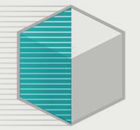Antiques for Everyone: NEC show (24-26 July)
The Antiques for Everyone show takes place from 24-26 July at the NEC in Birmingham and will once again bring a focus on buying and selling antiques and all the latest trend from antiques fans all over the globe. The event is one of the largest antiques and fine art fairs in the UK and attracts buyers and collectors from every price range with lots of fantastic finds just waiting to be discovered. As the Antiques for Everyone show approaches, what are the trends to look out for and what kinds of pieces are likely to be the most in demand?
Art Deco – thanks to the recent Gatsby film, the trend for Art Deco collectibles is going strong into 2014 and is likely to be one of the most notable at this year’s show. In particular demand are all things cocktail related, from Art Deco glassware through to vintage cocktail cabinets.
Timepieces – vintage timepieces have always been a collector’s item but this year even more so. Particularly with the digital age in which we now live, for some people checking the time on a beautifully crafted timepiece makes a pleasant alternative to looking at a smart phone or tablet.
China – particularly with American collectors, antique china has seen a huge surge in popularity recently. Industry insiders predict that the thirst for delicate cups, saucers and tableware will continue well into 2014 with strong sales through some of the best known names. Look out in particular for Wedgewood lustre bowls, which are proving to be in incredibly high demand.
Jewellery – antique jewellery has seen an up take in demand in recent months with more and more of us buying into the magic of a necklace or bracelet that has seen decades pass before it. Pearls in particular are experiencing a considerable resurgence, perhaps inspired by the Exhibition of Pearls that was held at the V&A in London until January of this year.
Off the wall – many antiques collectors have traditionally spent most of their time looking for items that ticked certain, pre-determined boxes in terms of materials and appearance. However, now the trend is for spotting those pieces that are a little bit off the wall and rather unusual. Of course the secret here is to pick up something that achieves a combination of unusual and desirable, rather than items that are just so out there no one wants them…
Budget friendly collectibles – although not particularly high in value, mass produced items from the 1950s and 60s are in high demand at the moment for their aesthetic, vintage appeal. Think quirky little statuettes, glassware and ornaments, as well as trinket boxes and vases.
Classic games – turn of the century parlour games are proving immensely popular with collectors at present. From puzzles to 18th century packs of Old Maid cards, there’s an enormous range to research and a serious fun factor too.
If you are buying large items or visiting the show from overseas you may well need the services of an international courier. Fast Lane International offers secure and reliable international parcel delivery for all your antique finds. You can track your package at every stage in its transit with us and we offer some fantastically low rates for both domestic and international shipping.
Don’t forget if you are sending antiques they may well be both fragile and valuable. Careful packaging is essential, click here for some handy tips.
One more thing: you must also keep in mind the item or items’ value. Be careful when planning to ship valuable antique jewelry for example, no gold, silver, watches, precious stones or other jewellery of this nature can be sent through DHL. Find out more about sending jewellery here.
Happy rummaging at the NEC, and don’t forget to use a tried and trusted parcels company to send your purchases, if you do strike it lucky!




